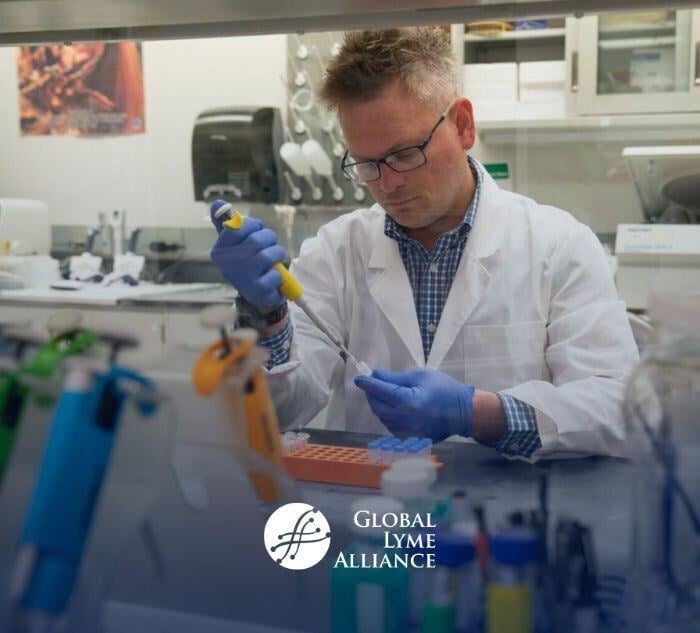
GLA’s Chief Scientific Officer takes an important look at our current clinical trials process. Is it still working? Does it serve patient needs?
by Timothy J. Sellati, Ph.D., Chief Scientific Officer, Global Lyme Alliance
The first structured clinical trials date back to the 1940s, not counting the first recorded trial of legumes in biblical times.¹ A lot has happened in the world of science, illness and disease, and patient sophistication in the last 80 years—maybe it’s time to re-visit the clinical trials process, to ensure that there is a balance between scientific rigor and patient needs.
As of June 24, 2020, the novel coronavirus known as SARS-CoV-2 has infected over 9 million people globally.* More than 470,000 people have died as a direct or indirect result of the ensuing viral disease COVID-19. Lacking immunity to this new viral pathogen, a vaccine to protect against it, or drugs proven to treat it COVID-19 has swept across the globe virtually unchecked.
Not surprisingly, the worldwide scientific and medical research community along with governmental agencies and non-profit organizations and the pharmaceutical and biotechnology industries are frantically seeking effective drugs and a vaccine to interrupt the explosive spread of COVID-19 and protect the global population against future infection if SARS-CoV-2 becomes a seasonal epidemic.
The current COVID-19 pandemic, and our collective rush to find viable treatment or vaccine options, brings our current clinical trials process to the forefront of discussion. Is the process still viable? Does it help or hinder getting safe, effective options into the hands of the physicians and patients who need them? Or does it remind us of the value of a thorough, yet lengthy process to keep the community safe? How do we balance the importance of good science with the needs of patients? Just like science itself, it’s a process fraught with questions.
Do we need to rethink our drug and vaccine testing approach?
Given the devastating personal and financial chaos this new coronavirus pandemic has wreaked it is no wonder that the slow and methodical philosophy regarding the path to clinical study validation of new drugs and vaccines has come under scrutiny. An argument could and perhaps should be made for the need to revamp the clinical trial process. Doing so might better serve patients in general, and specifically would address the immediacy of need in situations like COVID-19 as well as serve patients suffering from chronic Lyme disease, where few if any treatment advances have been made over the last three decades.
When is “tried and true” not good enough?
Like many things in the healthcare world, there are traditional methods and philosophical beliefs that may be outdated, ineffective, and perhaps more detrimental to progress than understanding the mysteries of disease, the intricacies of scientific inquiry, and the validation of medicine itself. If you tell a cancer patient they have a 100% chance of dying or a 30% chance of survival, but they may lose a limb, or their ability to taste, or any other of a variety of side effects, 100% of those cancer patients with a terminal prognosis are likely to take the chance/risk associated with an untested drug. This scenario and the severity of the current global pandemic challenges the premise that we cannot or should not deviate from taking every single step on the laborious and time-consuming path toward clinical validation of a novel drug or new COVID-19 vaccine.
In many ways, the health challenges faced by a subset of Lyme disease patients, those suffering from persistent symptoms and chronic disease for months or years, provokes us to pose the same question. Every day, these patients are taking risks with a variety of potential treatments and symptom relief options, because they are desperate to feel better vs. enduring continued pain, loss of physical and mental function, and an overall diminished quality of life. Under such circumstances, many Lyme patients will risk the side effects for a chance at relief. Given this reality and despite a lack of traditional clinical trial evidence, one might argue that the medical community should be provided more leeway in exploring alternative treatment options to those proscribed by current standard of care guidelines.
Why should the “patient’s voice” be heard?
Sometimes, the need to eliminate any potential safety issues and identify all possible side effects should or needs to be secondary to a patient’s ability to decide for themselves, through consultation with their physician, whether to try a new, not entirely proven, treatment option. Recognition and acknowledgement by the healthcare community that it does not always have the answers, especially as it relates to how a patient truly feels or the risk they would be willing to take, is the first step in providing more options to patients desperate for relief.
What might we trade for exigent reasons?
Exigency refers to an urgent need or demand while expediency is the quality of being convenient and practical despite possibly being improper or immoral. Perhaps treatment choices should be guided less by the results of large, multi-site, double-blind, randomized, placebo-controlled clinical trials and more on a calculus of greater benefit than risk, where risk is perhaps not as low as traditionally sought. A “scaled back” clinical study design that identifies biomarkers of treatment efficacy or surrogates of vaccine-induced protection, and qualifying patient groups and their potential response to intervention to increase, though not ensure, the likelihood of treatment or prevention success will expedite approval and availability of desperately needed medical advances.
The current COVID-19 pandemic and the need for advancement in treatment options for Lyme disease requires seeking balance between exigency and expediency. Streamlining the process of clinical study/trial design and execution could accelerate the discovery of novel drugs, treatment regimens and vaccines. However, potential side effects or the fact that not everyone will benefit may be missed. If this is the outcome and harm is done, the maker of drugs or vaccines or the physician with a novel treatment regimen may need indemnification against individual or class action lawsuits. People who freely choose to take a drug or vaccine, with inherent greater risk, may need to cede the right, at least under some circumstances, to legal recourse if harmed.
1 Evolution of Clinical Research: A History Before and Beyond James Lind, Dr Arun Bhatt
*Updated. As of July 22, 2020, the novel coronavirus known as SARS-CoV-2 has infected more than 15 million people globally.
Additional POVs by GLA’s Science Leadership Team
Research Sharing: What Can Lyme Disease Learn from Skin Cancer?
Parallel Pandemics: COVID-19 and Lyme Disease
Research POV: Lyme Arthritis and Peptidoglycan
Pandemics, Ecology, and Food Production: Is There a Connection?
Essential Oils as Treatment Against Lyme Disease
Antimicrobial Action of Calprotectin That Does Not Involve Metal Withholding

Timothy Sellati, P.h.D.
Former Chief Scientific Officer at Global Lyme Alliance
Timothy J. Sellati, PH.D. is Former Chief Scientific Officer at Global Lyme Alliance. As GLA’s Chief Scientific Officer, Dr. Sellati led GLA’s research initiatives to accelerate the development of more effective methods of diagnosis and treatment of Lyme and other tick-borne diseases.






